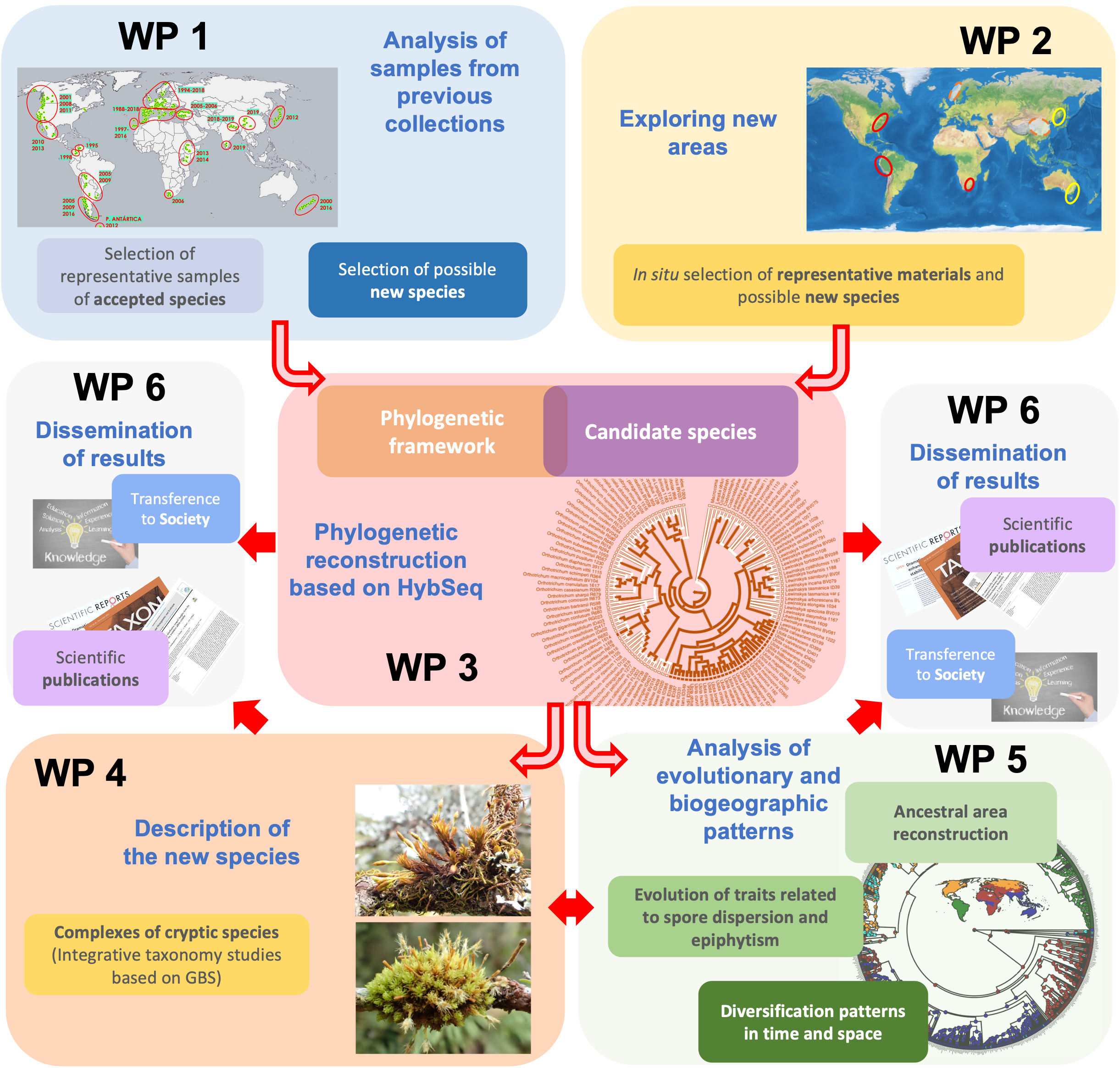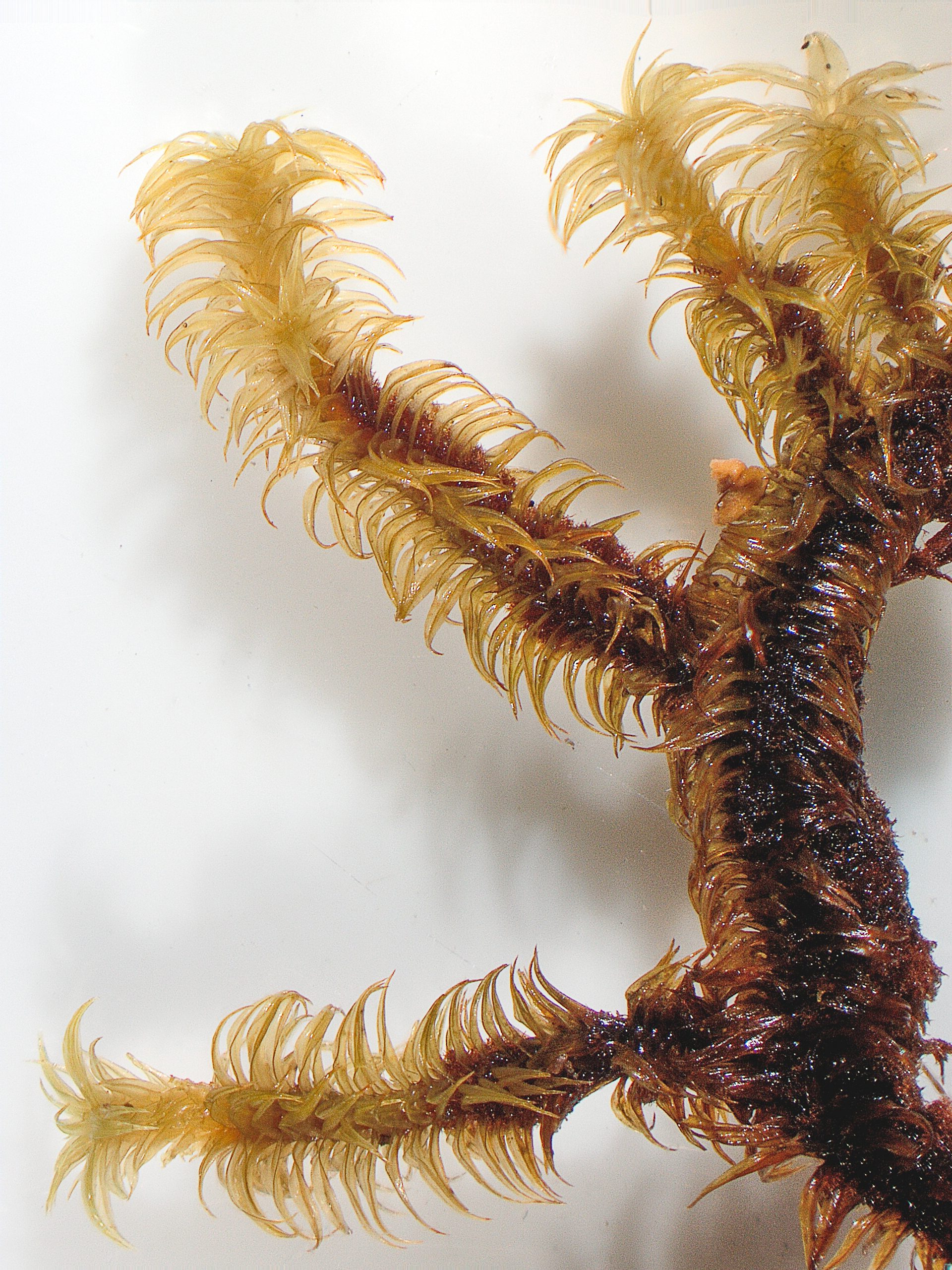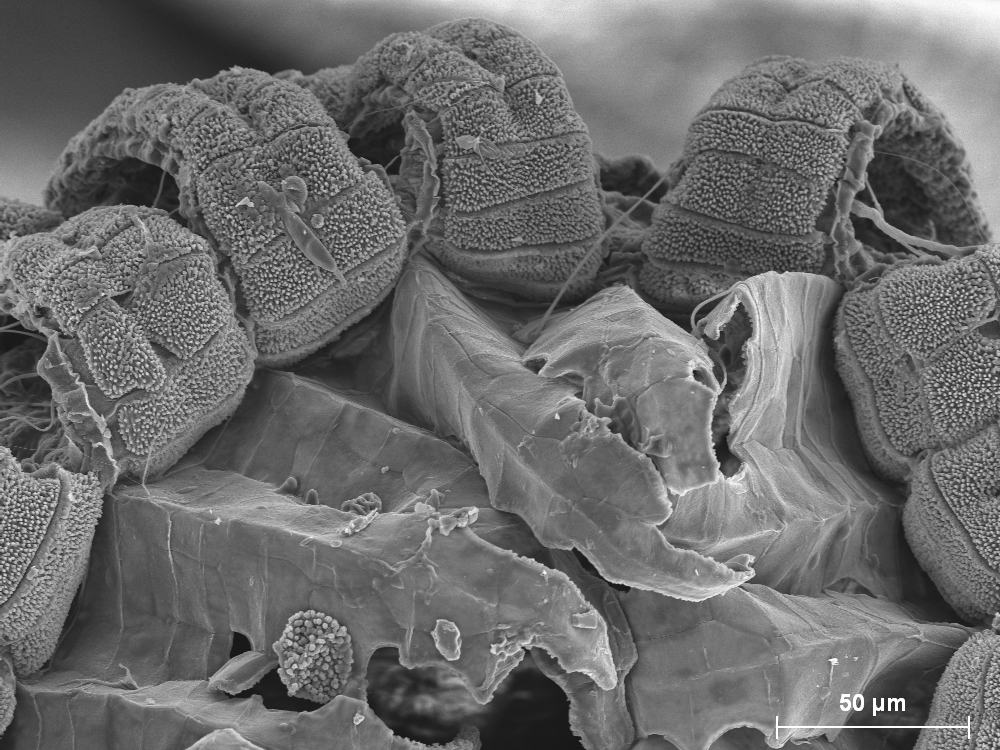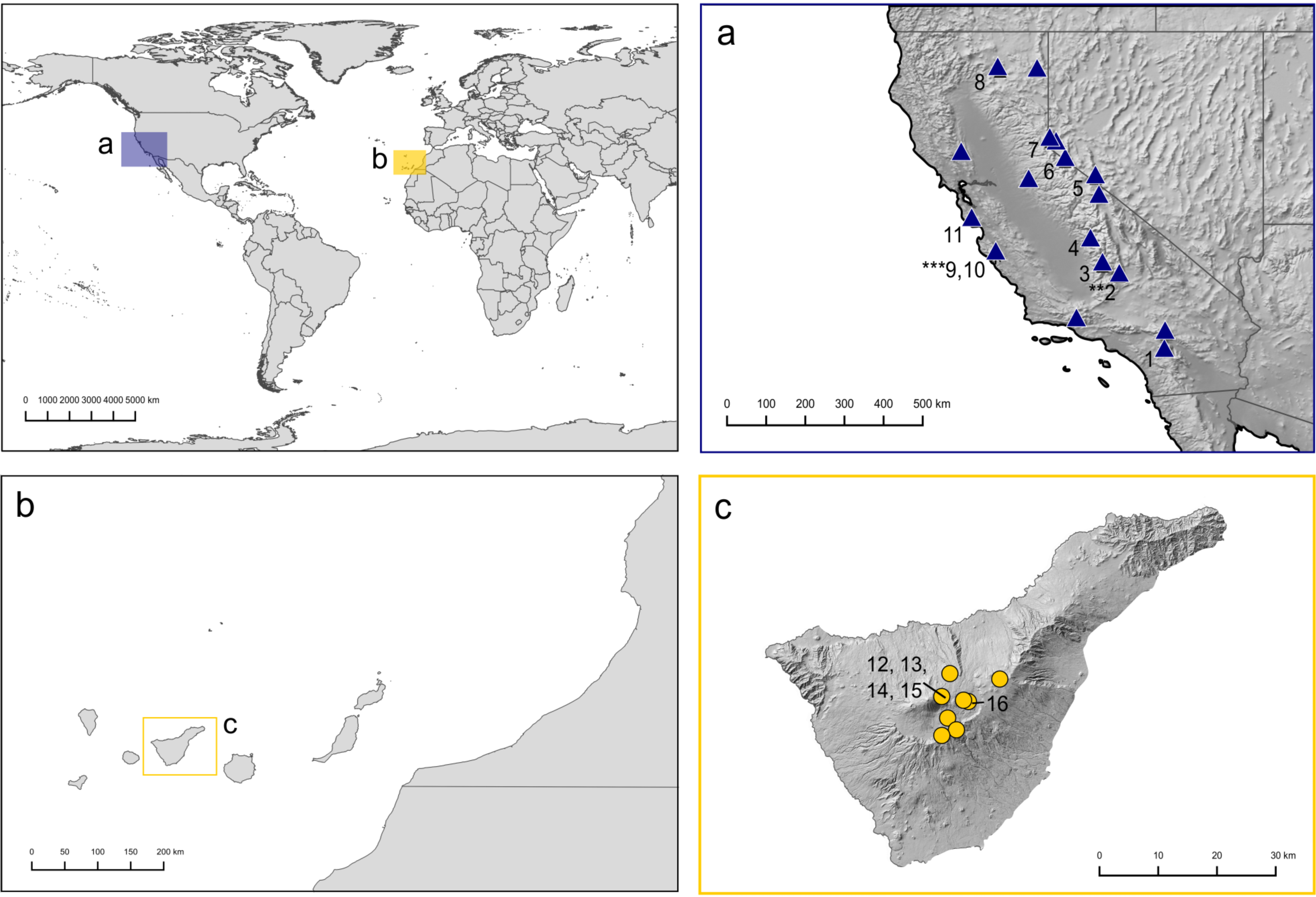Project OrthoCrypt
Exceptional cryptic diversity among bryophytes: are Orthotrichaceae a true case of megadiverse group?
2021-2025

OrthoCrypt is a COORDINATED PROJECT funded by the Spanish Government, including two subprojects:
Lewinskya vs. Orthotrichum: unveiling the true diversity of the two main genera of Orthotricheae after their separation (LEWINSKYA) – Grant PID2020-115149GB-C21, developed at Autonomus University of Madrid
and
Ulota and related genera of Orthotricheae, a puzzling group with unparalleled endemicity rates in hyper-oceanic areas of the world (ULOTA) – Grant PID2020-115149GB-C22, developed at University of Valencia



Project Abstract
OrthoCrypt represents a complex study that will eventually demonstrate that orthotrichaceous mosses contain an enormous cryptic diversity. The project is possible thanks to the availability of unique collections of Orthotricheae, gathered over the years by the team. We aim to complete them with new prospecting trips to achieve representation from practically all the areas of the world where this group of plants is especially diversified. The analysis of these collections will provide a complete taxon sampling of the species currently recognized and a wide set of potentially cryptic species (candidate new species) from all over the world. By means of NGS (Hyb-Seq) techniques we aim to achieve a complete and robust phylogeny of Orthotricheae. The cases of the most speciose and problematic cryptic complexes will be approached in a complementary way through integrative taxonomy studies supported by Genotyping-By-Sequencing (GBS) techniques.
All this will allow us to explore the evolutionary and biogeographic patterns of the Orthotricheae to achieve the general objective of the proposal: to ascertain the true dimension of the cryptic diversification processes among orthotrichaceous mosses and the level of taxonomic diversity to which they contribute.

Graphical abstract. Main processes, integrated in work packages (WP), planned to develop in the present project.
Project OrthoTree
Insights into the diversification patterns of a major group of epiphytic mosses through the effective phylogenetic resolution: Orthotrichoideae (Orthotrichaceae, Bryophyta)
2017-2021
OrthoTree is a project funded through the Spanish Government, grant CGL2016-80772-P



Project Abstract
The epiphytic environment is a difficult habitat for plant development, primarily due to its dryness, which is especially problematic in climatic areas with summer drought. Numerous members of the moss family Orthotrichaceae are specialized as pioneer epiphytes, and in temperate climates the Orthotrichoideae is the most diverse subfamily in this particular habitat. The understanding of the processes behind its diversification and current biogeography will provide a better comprehension of the reasons of its success. For this purpose, it is necessary to recover a detailed phylogeny, as complete as possible and with a reliable dating, in which the principal biogeographic events can be contrasted, and the ancestral states of the morphological features can be reconstructed.
The main objective of this project is to complete the study of the phylogeny and diversification frame of the subfamily Orthotrichoideae using an integrative methodology, in which morphological studies will be combined with the analysis of the genetic variation.
Main project achievements
We have obtained a fairly complete and resolved phylogeny of Orthotrichoideae, which has been published in a paper in the journal Frontiers in Plant Sciences [link to article].
According to the phylogenetic relationships recovered, we have proposed changes in the systematic delimitation of genera within Orthotrichoideae (Table 1), which include the segregation of two new genera (Atlantichella and Australoria), and merging Pleurorthotrichum with Pentastichella (Figure 1).


Figure 1. Pentastichella pentasticha, habit and detail of the peristome.
Table 1. Evolution of the classification of Orthotrichoideae during the last two decades.
|
Goffinet & Vitt, 1998 |
Goffinet et al., 2004 |
Plášek et al., 2015 |
Current proposal |
|
Tribe Orthotricheae |
Orthotricheae |
– |
Orthotricheae |
|
Orthotrichum Hedw. |
Orthotrichum Hedw. |
Orthotrichum Hedw. |
Orthotrichum Hedw. |
|
Muelleriella Dusén |
|
|
|
|
Orthomitrium Lewinsky & Crosby |
|
|
|
|
|
Nyholmiella Holmen & E.Warncke |
Nyholmiella Holmen & E.Warncke |
Nyholmiella Holmen & E.Warncke |
|
Stoneobryum D.H.Norris & H.Rob. |
Stoneobryum D.H.Norris & H.Rob. |
– |
Stoneobryum D.H.Norris & H.Rob. |
|
|
Sehnemobryum Lewinsky & Hedenäs |
– |
Sehnemobryum Lewinsky & Hedenäs |
|
|
|
Dorcadion Lindb. nom. illeg. |
Lewinskya F.Lara, Garilleti & Goffinet |
|
|
|
Pulvigera Plášek, Sawicki & Ochyra |
Pulvigera Plášek, Sawicki & Ochyra |
|
Ulota D.Mohr |
Ulota D.Mohr |
Ulota D.Mohr |
Ulota D.Mohr |
|
|
|
Plenogemma Plášek, Sawicki & Ochyra |
Plenogemma Plášek, Sawicki & Ochyra |
|
|
|
|
Atlantichella F.Lara, Garilleti & Draper |
|
Tribe Zygodonteae |
Zygodonteae |
– |
Zygodonteae |
|
Zygodon Hook. & Taylor |
Zygodon Hook. & Taylor |
– |
Zygodon Hook. & Taylor |
|
Stenomitrium (Mitt.) Broth. nom. illeg. |
Pentastichella Müll.Hal. |
|
Pentastichella Müll.Hal. |
|
Pleurorthotrichum Broth. |
Pleurorthotrichum Broth. |
|
|
|
|
|
|
Australoria F.Lara, Garilleti & Draper |
|
Bryomaltaea Goffinet |
|
|
|
|
Leptodontiopsis Broth. |
|
|
|
|
Codonoblepharon Schwägr. |
Codonoblepharon Schwägr. |
– |
Codonoblepharon Schwägr. |
During the course of this project, we have contributed to the knowledge on the diversity within the orthotrichaceous genera. Among others, we have deepened into the species delimitation in Pulvigera, previously considered monospecific [link to publication], and Lewinskya [link to publication].
In addition, we have identified different patterns of colonization and evolution to explain the current distributional areas of the species of Orthotrichoideae. These include both long distance dispersal events, as in the case of Orthotrichum shevockii [Figure 2; link to publication], and sympatric and allopatric evolution, like in the species that conform the Lewinskya affinis complex [link to publication].

Figure 2. Geographic distribution of the studied specimens of O. shevockii. (a) California and Nevada, (b) the Canary Islands, (c) Tenerife. Numbers indicate specimens that were included in phylogenetic analyses. ** original locality of O. shevockii, *** originial locality of O. kellmanii (see publication for further details).
